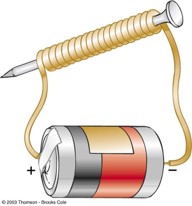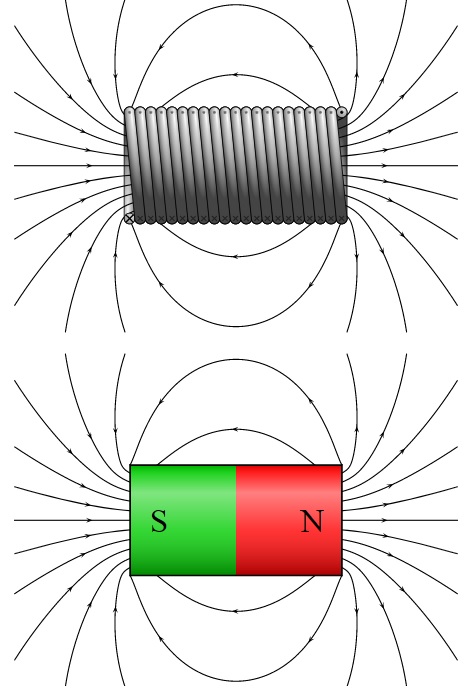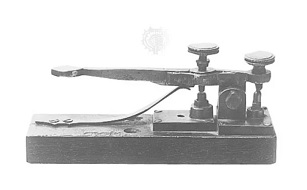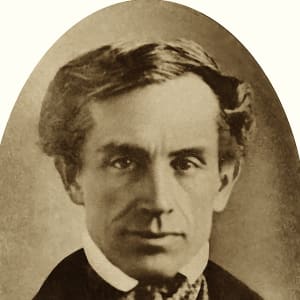
Dots and Dashes
Build It!

| Ages | Cost | Time |
|---|---|---|
| 14+ | Medium | Full day |
Communication is a deep-seated human need. It is our ability to communicate that has allowed us to coordinate our thoughts and actions to achieve all that we have. For thousands of years, we were limited in how far and how quickly we could send communications. The telegraph machine, however, changed all that and ushered in an era of high-speed, long-distance communication that we still rely on today.
Design and build your own telegraph machine to communicate a simple message to a friend using Morse Code over a distance of at least 10 m (33 ft) and then share your design with the world at #nextengineersdiy.
You can design and build on your own or form a design team with some friends. The choice is yours whether you want to set up your own neighborhood communication network.
Download a simple Morse code guide here.
These are the things that your design should be able to do or the things that will help determine if your design is a success.
These are limitations on your design. These are the things you cannot do when designing or what your design should not be like.
Engineers start by asking lots of questions. What problem must be solved? Who has the problem? What do we want to accomplish? What are the project requirements? What are the limitations? What is the goal? Through this process, engineers start to identify the criteria (the conditions the solution must satisfy to be considered successful) and the constraints (the limitations they need to design within). Here are some initial questions you might like to ask yourself.
Engineers dig deep into the problem by collecting information and data about the problem and any existing solutions that might be adaptable. They talk to people from many different backgrounds and specialties to assist with this research. Perhaps the most important question right now is:
To answer this question, visit the Experiment and Explore activity called Electromagnetism to explore what happens when you coil copper wire around a nail and attach it to a battery, or check out the PDF of this activity for a short investigation.
Now, how do you think you can use an electromagnet that you can turn on and off by making and breaking an electric circuit to communicate a message using Morse code? In other words, how might you design and build your own telegraph machine? What other solutions exist already that you could learn from, adapt, or improve?


Now the fun really starts! Engineers start to brainstorm ideas and develop as many different solutions as possible, sometimes even crazy ones! This is the time for wild ideas and delayed judgment. It is important to build on the ideas of others while staying focused on the core problem and keeping the criteria and constraints in mind. For example, if there is a budget, can the potential solution be developed within that budget?
Engineers choose one or more of the most promising solutions to prototype. A prototype is a model that works well enough to test part or all of the solution. The idea with prototypes is to build quickly and cheaply so that the costs of changing your mind or your design are not too high. Use prototypes to learn as much as you can about what works as quickly and as cheaply as you can.
You might want to prototype your electromagnet or the device you use to make and break the circuit. How are you going to hold your batteries together and connect them to your circuit? How will the receiver know if the electromagnet is on or not?
Most prototypes fail, but that is good. It tells engineers which ideas they should focus on. Engineers also need to decide if the design really does solve the original problem.
You are eventually going to need to put your design to the test. Think about how you are going to test. What aspects are you going to test? What data will you collect? How will you analyze this data?
Remember, there is no shame in failing. All the best engineers fail ALL THE TIME. It’s what they do when they fail that makes them great: they learn and improve.
After learning through testing, engineers redesign and retest until they have the best solution possible – one that balances the criteria and constraints. This is a process called optimization. Great engineers are not happy with a solution that only just works. They want to create the very best solution they can within their constraints. Make sure that you do the same.
Remember that failure is not the end – it’s only the beginning. Think about how you can improve your design. Maybe go back to the drawing board if necessary and choose another of your original designs to try. Which parts of your telegraph device can you improve upon? What parts of your device need a better solution altogether?
The most important thing is that you keep testing, learning, and improving.
Finally, engineers reach a point where they are satisfied with their solution and have optimized it as much as possible. It does not need to be perfect, but it should ‘satisfice’ - meet the criteria within the constraints. Engineers now communicate their solution to others.
You can share your design however you like – a video, pictures, a blog – and on any platform you like. Just remember to tag #nextengineersdiy.
You can use any materials you like so long as you do not spend more than US$15 (or its equivalent). Remember to get the permission and/or supervision of an adult before you use any tools or equipment.
Here are some materials and equipment that you might find useful.
Here are some resources you might find helpful to get you started.
Watch how Hans Christian Oersted discovered quite by accident that electricity and magnetism are related.
Science Buddies talk about how electromagnets work.

What exactly is a telegraph machine, anyway?

Learn more about the development of Morse Code.
Rod's Garage walks through the history of the electric telegraph and shows how to build one with at-home items.
If you need more of a challenge, here are some ideas to take your design to next level.